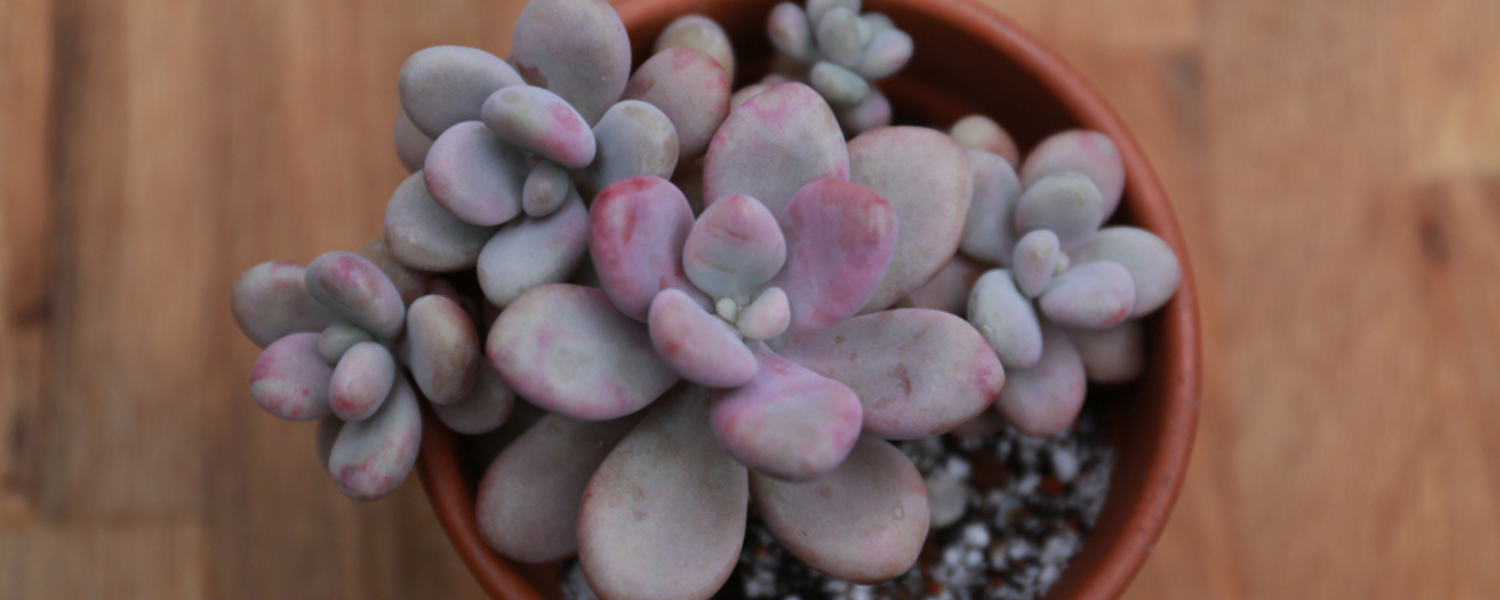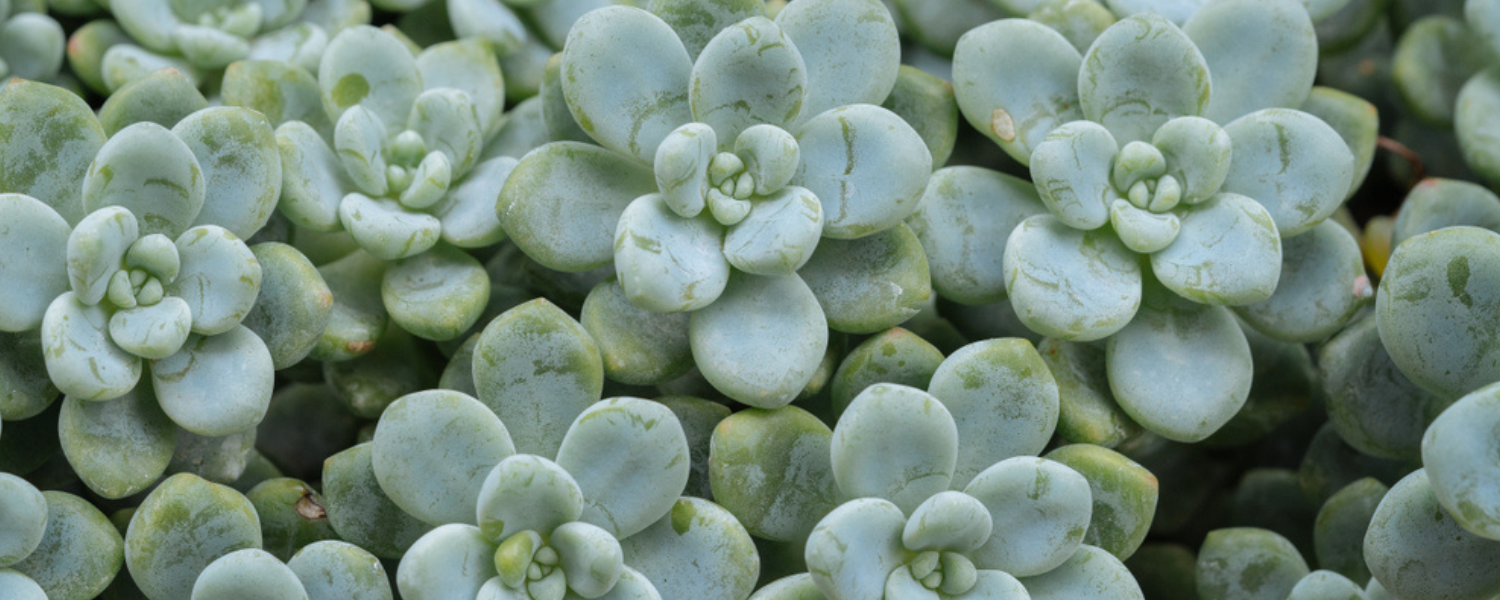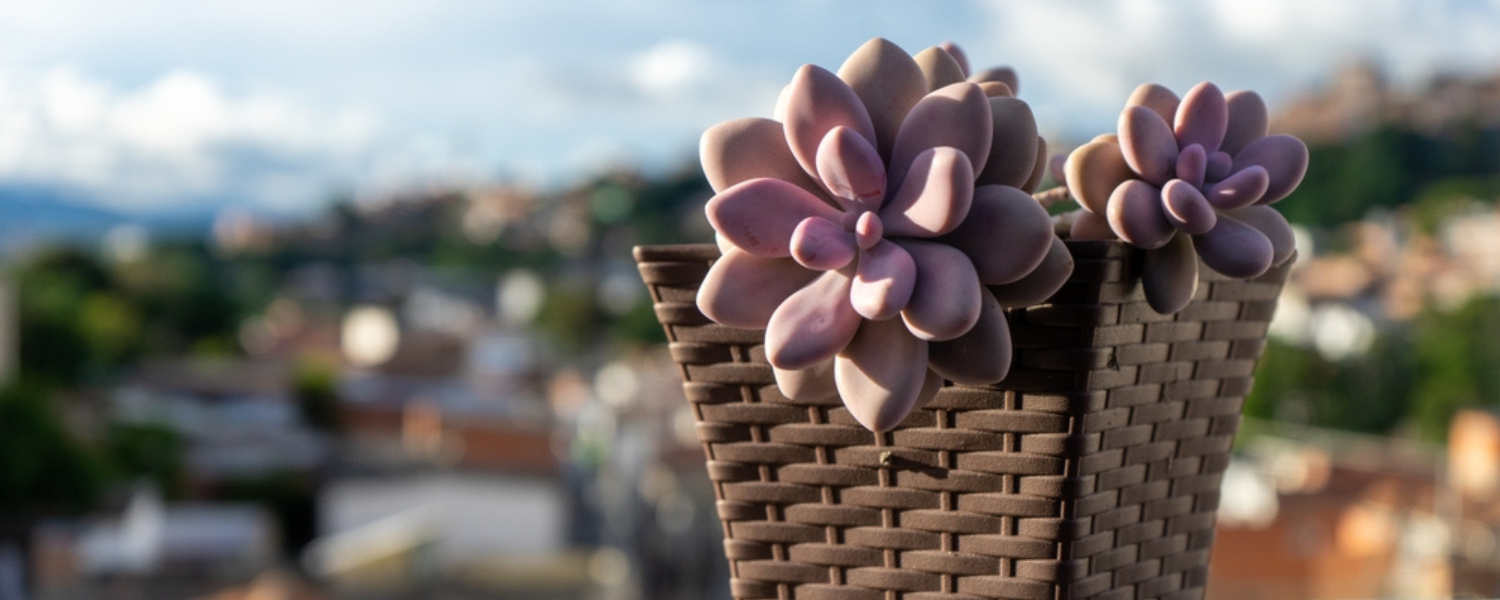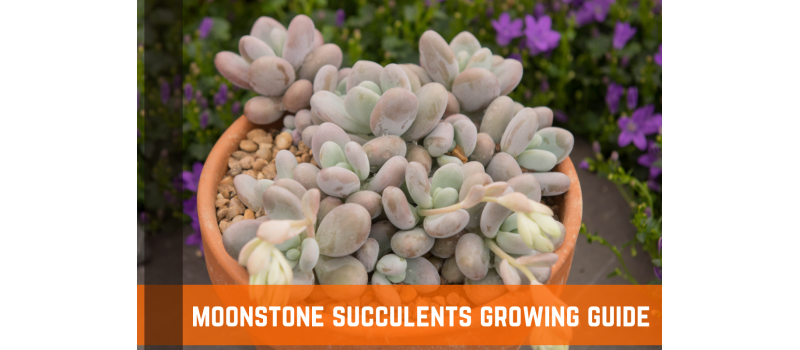Moonstones, also known as Pachyphytum Oviferum, is a succulent that is native to Mexico and can make an eye-catching addition to your collection of plants. This plant, which has distinctive and lovely flowers that look gorgeous whether you grow them in your garden or containers, has silvery, plump leaves.
If you give Pachyphytum Oviferum the proper growing conditions, it can be a trouble-free plant, much like other succulents. Therefore, if you are considering bringing these amazing succulents into your home, be sure to provide them with the proper soil, moisture, and light levels. Here are some instructions on growing and caring for moonstone succulents.
Optimal Growing Conditions For Pachyphtum Oviferum
Light
Moonstones may thrive in both direct and indirect sunshine. It will depend on your region whether it is the first or the second. Make it a point to protect your plant from the afternoon sun in regions with extremely hot summers. Placing your moonstone succulent in a sunny area will provide your plant with the necessary amount of light energy. Place your plant in a bright location indoors and remember to turn the pot every few days. Long stems and fading leaves won't help you achieve the desired visual appeal.
Temperature
Pachyphtum Oviferum grow in the USDA hardiness zones 10a to 11b. These regions have a temperature range of 30 to 50 degrees Fahrenheit. But as always, there is opportunity for negotiation. Temperatures as low as 20 F are bearable on the low side. Anything after this will cause the death of your plant. Therefore, it is imperative to avoid frigid circumstances at all costs.

Water
Pachyphtum Oviferum require the same amount of watering that most succulents do. This means that in between watering sessions, the potting media needs to dry out. You won't have to cope with the threat that root rot poses if you water carefully. By touching the leaves, you may quickly determine whether your plant needs water. They are fine if they have a firm feel. However, if the leaves are soft, you must water your moonstone succulent.
Soil
Moonstone succulents should not be grown in any soil that has a significant water retention time. Choose a medium that drains well enough before using it. Mixing a few readily accessible materials—the most popular being sand, perlite/pumice, and ordinary potting soil—will enable you to create one. You may create the ideal potting medium for your plant by combining these materials. Sand and compost make a wonderful complementary pair.
How To Plant Pachyphytum Oviferum "Moonstone Succulent"
Outdoors
Choose a location in your garden that receives year-round, direct sunlight where you may plant your Pachyphytum oviferum. However, if the summers in your area are particularly hot, choose a location that gets some afternoon shade.
- To a depth of 10 to 12 inches, mix equal parts of compost and sand or pumice in the area where you will be growing Pachyphytum oviferum. By using this mixture, you can prevent water from standing in the soil and damaging the roots of your succulent plants.
- When the earth seems dry after planting your moonstone, water your succulent. Remember that too much watering will cause the roots of your plant to rot. Additionally, safeguard your Pachyphytum Oviferum from the cold; these sensitive succulents cannot withstand temperatures below 20 °F.
- Keep in mind that the plant will perish at temperatures below 20 °F. Even though Pachyphytum Oviferum can withstand strong morning sunshine, you must make sure to shield it from the afternoon sun. In times of frost, cover your succulent with a sheet or thin blanket.
The leaves of your plant are rather sensitive and more prone to harm, especially when they are overwatered, so avoid watering it in a way that causes water droplets to splash on them. Additionally, as succulents actively grow during the winter, they will require extra water during that time.

Indoors
Make sure to provide your Pachyphytum Oviferum the ideal growing conditions if you choose to grow it indoors in a container. You must first learn how to move it into a container, though.
- First, fill the bottom of your plant pot with gravel before adding potting soil designed especially for succulents. You don't need a very deep container to plant your Pachyphytum Oviferum; if your succulent is 2 inches tall, a 2.5-inch container is a suitable option.
- Since moonstones can spread up to 12 inches wide, your plant pot can progressively increase in size as your plant matures to 8 to 12 inches in diameter. Pachyphytum Oviferum thrives in containers of this size because they allow the striking succulent to expand as it grows. After you have finished positioning the container, insert the stem of your Pachyphytum oviferum as deeply as possible.
- After that, water your plant thoroughly and cover the soil with a layer of black pebbles to give it a more appealing appearance. Keep your plant in a bright area where it receives enough sunshine.
- Only water the Pachyphytum Oviferum in the container when the soil feels dry to a depth of 4 inches. Your delicate succulent will be harmed if you water it when the earth still feels damp.
The best approach to determine whether your succulent needs water is to look at your Pachyphytum Oviferum leaves. Your succulents don't need water if they are firm and seem fat. On the other hand, water your plant's leaves immediately if they feel soft and appear wrinkled.
Repotting Moonstone Succulents
Pachyphytum oviferum grows slowly and only requires repotting once every two years or less. Despite having a potential 12 inch wide spread, this succulent maintains its compact shape. Upgrade to a pot that is just 1-2 inches larger; a container that is too big will store too much water, which could lead to this plant's demise. Use a pot with drainage holes if you can.

Common Pachyphytum Oviferum Pests
The most frequent pest on moonstone succulents is mealybugs. On the stems and leaves, look for fuzzy, white, cotton-like particles. Infestations should be treated right away. Check for mealybugs at the roots of your plant if it appears limp and wilted and you haven't overwatered it. If they are not handled, the plant can eventually die.
A cotton swab dipped in a 70% or less solution of isopropyl alcohol in water can be used to dab directly on mealybugs to destroy or eradicate tiny infestations on houseplants. To ensure that the solution won't result in leaf burn, test it out on a small portion of the plant one to two days earlier. A considerably more diluted solution may be necessary in certain circumstances. A 10–25% solution of isopropyl alcohol can be sprayed on areas with severe infestations. This process must be repeated each week until the infestation is eradicated.
Conclusion
Moonstone succulents, commonly referred as as Pachyphytum Oviferum, are indigenous to Mexico. Their round, fleshy leaves covered in a powdery white material make them easy to identify. Pachyphytum Oviferum prefer soil that drains well and partial sunlight. They are quite susceptible to overwatering, and if left in standing water, they will decay.
When watering, wait until the soil is completely dry before watering again. Since Pachyphytum Oviferum cannot tolerate frost, they should be taken indoors or otherwise protected from the cold. You may grow more of these succulents by taking leaf cuttings or offsets. Pachyphytum Oviferum is a great addition to any collection of succulents. Follow our tips and you'll be on your way to growing your own collection of moonstone succulents in no time!

